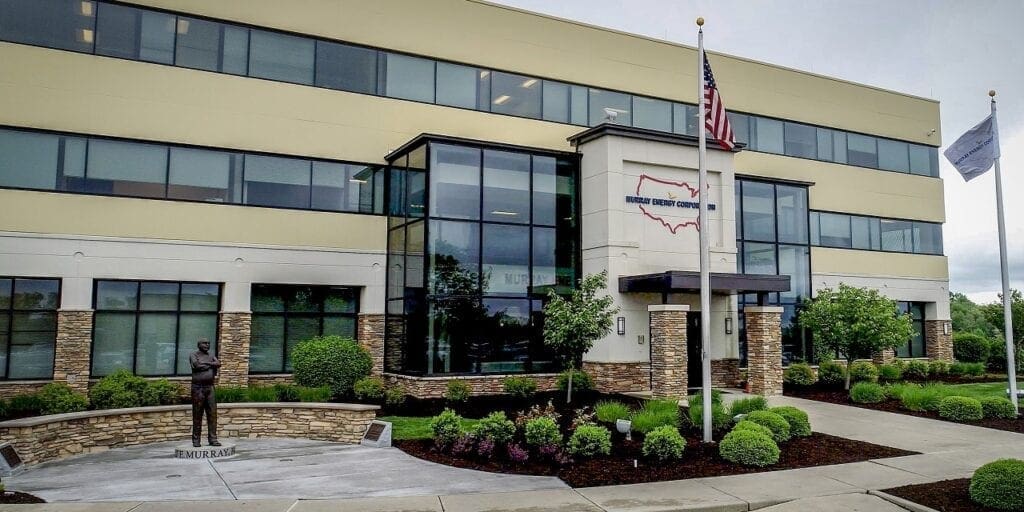The coal industry is not dead yet here in the Upper Ohio Valley, but a pleasant picture it is not.
Mines are being idled, and some in operation are operating with skeleton crews, a shell of their former robust 24-7 workforce. WARN notices have become the norm.
Francis “Shorty” “Wehr is on the front lines of the coal industry locally and has been for decades. A Vietnam veteran, Wehr started in the industry before working his way toward a job with the Mine Safety and Health Administration as an inspector.
Wehr continued working with MSHA until his retirement 15 years ago. Since then, he’s operated a training certification class at Safety Systems Analysis Corp. New miners, contract workers, and anyone else looking to do work on mining property needs to go through Wehr’s class or one like it.
His numbers too are dwindling.
“We were down for nearly two months because of the coronavirus,” Wehr said. “But even before, my numbers were down 70 percent. I’ll get one or two a week now, sometimes up to six or seven.
“But in the past, I’d have 10 to 15 people per week.”
Class Size Reflects Shape of the Market
Wehr offers 40- and 80-hour training classes so workers can obtain their 46, 48A or 48B cards. Want to sent foot in or on mining property to perform any kind of work? These training cards are mandatory.
So, 1 to 2 attendees a week on averages is not a good sign, especially when you factor the market is far from oversaturated with people offering these courses.
“I’m fortunately hooked up with independent contracts,” Wehr said. “Any time you come onto the property to do any kind of service work, you have to have the certification.”
Contract workers make up a big portion of his class attendees now. He’s even had a few welders employed by the electronic companies.
But one thing is for certain. A lot of new miners are not taking the course.
“Honestly, it looks like it’s being phased out in this area,” Wehr said. “Things are going downhill, and there’s really been no progress.”

Contributing Factors
Does Wehr blame it all on the former President Barak Obama’s policies? No. The Obama Administration’s push for increased regulation certainly didn’t help, but it’s not the only factor.
The coronavirus pandemic certainly did a number of the economics of the industry, but it wasn’t the main cause of its downfall either, more like kicking a man when he’s down.
Consider this. Since 2019, three of the top six coal producers nationally filed for Chapter 11 bankruptcy: Cloud Peak Energy, Revelation/Blackjewel, and Murray Energy, headquartered in St. Clairsville.
Two other major producers, Peabody Energy and Arch Coal, filed for Chapter 11 in 2016. Arch exited Chapter 11 protection that same year; Peabody, the following.
“The regulations, the high-sulfur content, the coal ash byproduct at the power plants, it all contributes,” Wehr said.
He also noted that Murray picked the wrong time to buy up a number of mines, including purchasing five West Virginia-based mines from CONSOL Energy.
The export market isn’t nearly as robust as it once was, and the looming and growing threat of natural-gas as a more affordable power-generation source is making it a difficult time for coal.
Moody’s certainly painted a bleak picture with its most recent investor’ s report dated May 31:
- Our negative outlook for the North American coal industry reflects our expectation for EBITDA to fall by more than 50% in 2020. US thermal coal production is set to drop by more than 25% in 2020, and commodity prices have weakened meaningfully since 2018. We expect a sharp and sustained slowdown in economic activity will result in lower economic growth, reduced demand for electricity, and reduced demand for steel.

Local Effect
Wehr has felt the downturn effects personally and not just in his own class sizes.
A family member started as a miner at Century Mine in 2000. He got laid off, was recalled back to work, and then laid off again.
For former miners, it makes the decision to return, if it does come, a difficult one.
“It’s tough out there for coal mining,” Wehr said. “If you are still working and have a good contract, keep it. It’s good money and good benefits.
“But if you’ve been laid off and found steady work elsewhere, it’s tough to go back with another layoff looming. Why take a chance and go back?”
Many mines are battling through the same issues, but not all locally. Wehr did note that Tunnel Ridge, an Alliance Coal operation near West Liberty, seems to be doing pretty well.


